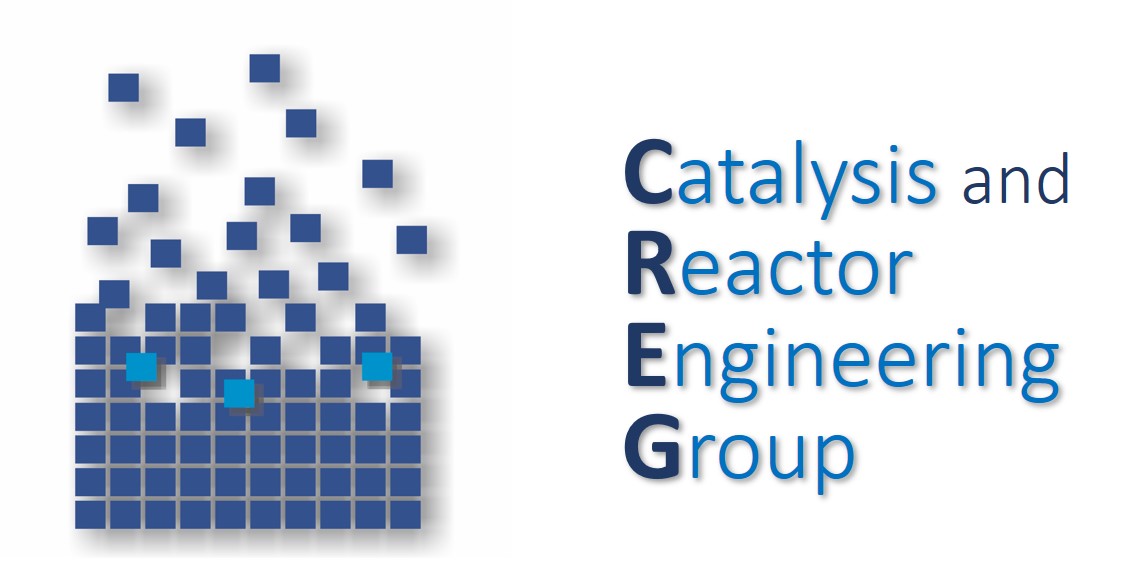
Teléfono: +34 876 555 429
Email: srenda@unizar.es
Dirección: Despacho 3.1.11 c/Mariano Esquillor SN Edificio I+D+i, I3A, 50018, Zaragoza (Spain)
Sideral: Ver el perfil (CV)
SOBRE MÍ
Simona Renda es investigadora postdoctoral Juan de la Cierva y forma parte del Grupo Consolidado de Catálisis y Tecnología de Reactores (CREG) de la Universidad de Zaragoza desde 2023, así como del Instituto de Investigación en Ingeniería de Aragón (I3A) desde 2025. Es licenciada y máster en Ingeniería Química y obtuvo el doctorado en Ingeniería Industrial – programa de Ingeniería Química por la Universidad de Salerno (Italia), con mención de excelencia.
Su investigación se centra en la catálisis y la ingeniería de reactores para aplicaciones medioambientales. Cuenta con una trayectoria consolidada en catalizadores estructurados y valorización de CO2 y otros procesos industriales como el tratamiento de gases Claus, la desalación de agua en procesos de destilación con membranas y la deshidrogenación de propano. Tiene experiencia tanto experimental como en modelización CFD, y sus proyectos combinan investigación académica con colaboraciones industriales. Ha participado en más de 10 proyectos de investigación y transferencia tecnológica, incluyendo dos proyectos europeos en el marco H2020. En el CREG desarrolla actualmente dos líneas principales:
-
- Hidrogenación de CO2 para la obtención de e-combustibles (dimetil éter y metanol)
- Reactores de lecho fluidizado con flujo continuo de adsorbente para la intensificación de procesos con captura in situ
Su actividad investigadora incluye colaboraciones con más de diez partners industriales y extranjeros, y ha participado con contribuciones científicas en más de quince congresos internacionales. Es revisora activa de varias revistas científicas y miembro del comité de jóvenes editores de la revista Catalysts. También está comprometida con la formación: ha dirigido 6 trabajos de fin de grado y 9 de fin de máster, ha coordinado 5 estancias internacionales y dirige actualmente una tesis doctoral sobre valorización de CO₂. Ha participado en actividades docentes en asignaturas de catálisis e ingeniería de reactores en la Universidad de Salerno y en la Universidad de Zaragoza.
Simona es autora de más de 30 artículos científicos en revistas indexadas, con más de 800 citas y un índice h de 13 (según Scopus, diciembre de 2025).
Orcid: https://orcid.org/0000-0002-5926-5252
Scopus: https://www.scopus.com/authid/detail.uri?authorId=57212381756
PUBLICACIONES
2026
González-Pizarro, R.; Calero-Berrocal, R.; Lasobras, J.; Renda, S.; Rodríguez-Pardo, M. R.; Soler, J.; Menéndez, M.; Herguido, J.
Tuning e-fuel selectivity in sorption-enhanced CO2 hydrogenation over In2O3/ZrO2: The effect of LTA and FAU zeolites Artículo de revista
En: Fuel, vol. 406, pp. 136974, 2026, ISSN: 0016-2361.
@article{GONZALEZPIZARRO2026136974,
title = {Tuning e-fuel selectivity in sorption-enhanced CO2 hydrogenation over In2O3/ZrO2: The effect of LTA and FAU zeolites},
author = {R. González-Pizarro and R. Calero-Berrocal and J. Lasobras and S. Renda and M. R. Rodríguez-Pardo and J. Soler and M. Menéndez and J. Herguido},
url = {https://www.sciencedirect.com/science/article/pii/S0016236125026997},
doi = {https://doi.org/10.1016/j.fuel.2025.136974},
issn = {0016-2361},
year = {2026},
date = {2026-01-01},
journal = {Fuel},
volume = {406},
pages = {136974},
abstract = {The e-fuels synthesis via CO2 hydrogenation and the Sorption Enhanced Reaction technology are captivating strategies for CO2 utilization and the integration of renewable energy sources. This study focuses on enhancing the conversion of CO2 over an In2O3/ZrO2 catalyst by incorporating LTA zeolites (3A and 4A) and a FAU zeolite (13X). Key operational parameters, such as temperature (T), Gas Hour Space Velocity (GHSV), type of zeolite, and Zeolite: Catalyst mass ratio (Z/C), were systematically varied. LTA zeolites (3A and 4A) provided the highest CO2 conversions. The introduction of a water-adsorbing solid into the reactor significantly altered the products yield and selectivity. While the selectivity towards CH4, CH3OH, and C2H6O appeared to lay on the type of zeolite, the selectivity towards CO remained unaffected. Zeolite 3A demonstrated the greatest enhancement in selectivity towards CH4 and CH3OH, whereas the synthesis of C2H6O was favored by zeolites 4A and 13X. The Zeolite:Catalyst mass ratio also played a crucial role in process performance, influencing both CO2 conversion and product selectivity. Increasing this ratio improved CO2 conversion and reduced CO selectivity under all operating conditions, while CH4 selectivity increased. However, the selectivity toward CH3OH and C2H6O exhibited an anomalous and complementary behavior. While a maximum was observed for DME, a minimum was registered in methanol production, suggesting a dependency of the dehydration reaction kinetics on the amount of water produced during the reaction.},
keywords = {},
pubstate = {published},
tppubtype = {article}
}
González-Pizarro, R.; Renda, S.; Lasobras, J.; Soler, J.; Menéndez, M.; Herguido, J.
Low loading copper-based catalysts for effective CO2 hydrogenation to methanol Artículo de revista
En: Fuel, vol. 408, pp. 137642, 2026, ISSN: 0016-2361.
@article{GONZALEZPIZARRO2026137642,
title = {Low loading copper-based catalysts for effective CO2 hydrogenation to methanol},
author = {R. González-Pizarro and S. Renda and J. Lasobras and J. Soler and M. Menéndez and J. Herguido},
url = {https://www.sciencedirect.com/science/article/pii/S001623612503368X},
doi = {https://doi.org/10.1016/j.fuel.2025.137642},
issn = {0016-2361},
year = {2026},
date = {2026-01-01},
journal = {Fuel},
volume = {408},
pages = {137642},
abstract = {Methanol synthesis via CO2 hydrogenation is an emerging Power-to-Liquid (PtL) technology aimed to accelerate the energy transition and the defossilization of key sectors, particularly maritime transport. This study focuses on the study of low loading formulations, to minimize the catalyst cost. Key operational variables including temperature (T), Weight Hourly Space Velocity (WHSV), copper and zinc loadings, and aging state were systematically varied. An overall active phase loading of 10 %wt emerged as optimal. Within this total loading, a 5 %wtCu-5 %wtZn/ZrO2 catalysts delivered higher methanol productivity than 10 %wtCu/ZrO2; however, the bimetallic catalysts showed pronounced deactivation under water-rich atmospheres, establishing 10 %wtCu/ZrO2 as the most promising catalysts. Operating temperature and WHSV exerted a strong, synergistic influence on CH3OH formation; in particular, increasing WHSV shifted the reaction away from thermodynamic control and boosted methanol synthesis. Finally, the catalytic performance of these low-loading catalysts was benchmarked against high-copper-loading methanol catalysts reported in the literature by critically compare their activities as a function of the residence time (τ) calculated at reaction conditions. This assessment revealed that the proposed formulation is highly competitive when compared to most conventional formulation, with a maximum methanol space time yield (STYCH3OH) of 3.9 gCH3OH gCu-1 h-1. This comparison confirms that the catalysts proposed in this study could offer a remarkably more efficient use of the active phase than the conventional high-copper-loading catalysts.},
keywords = {},
pubstate = {published},
tppubtype = {article}
}
Renda, Simona; Soler, Jaime; Menéndez, Miguel; Herguido, Javier
Doped In2O3/ZrO2 catalysts to drive selectivity toward DME in one-pot CO2 hydrogenation Artículo de revista
En: Applied Catalysis A: General, vol. 710, pp. 120682, 2026, ISSN: 0926-860X.
@article{RENDA2026120682,
title = {Doped In2O3/ZrO2 catalysts to drive selectivity toward DME in one-pot CO2 hydrogenation},
author = {Simona Renda and Jaime Soler and Miguel Menéndez and Javier Herguido},
url = {https://www.sciencedirect.com/science/article/pii/S0926860X25005848},
doi = {https://doi.org/10.1016/j.apcata.2025.120682},
issn = {0926-860X},
year = {2026},
date = {2026-01-01},
journal = {Applied Catalysis A: General},
volume = {710},
pages = {120682},
abstract = {This study investigates single-pass dimethyl ether synthesis at mild pressure conditions using novel bifunctional catalysts based on indium-modified formulations and incorporating Ni, Cu, Pt, and Pd as active metals. Additionally, the substitution of the conventional HZSM-5 zeolite with 4A zeolite as the dehydration component was evaluated. Although 4A zeolite exhibited lower dehydration activity, it contributed to an overall improvement in DME selectivity. The incorporation of secondary metals into the In2O3-ZrO2 formulation reduced catalytic activity but enhanced selectivity, ultimately increasing DME yield. The formation of by-products such as light olefins and methane was significantly dependent on the metal used: Ni, Pt, and Pd reduced olefin production, though Ni promoted excessive methane formation across the whole temperature range. Notably, the Pt-based catalyst completely suppressed by-product formation across the temperature range studied. While the In2O3-ZrO2-based catalysts generally displayed lower space–time yields than the commercial reference, they achieved comparable performance at 280 °C. Due to their superior selectivity, these formulations are promising for developing even better performing catalysts, to be excellent candidates in industrial processes, where the operation with recycle loops requires a high product purity.},
keywords = {},
pubstate = {published},
tppubtype = {article}
}
2025
González Pizarro, Rodrigo; Lasobras Laguna, Javier; Renda, Simona; Soler Herrero, Jaime; Menéndez, Miguel; Herguido, Javier
Intensificación del proceso para la producción de gas de síntesis via (LT-rWGS): un reactor de lecho fluidizado con alimentación continua de sorbente (CSF) Actas de congresos
vol. 13, 2025.
@proceedings{GonzálezPizarro_LasobrasLaguna_Renda_SolerHerrero_Menéndez_Herguido_2025,
title = {Intensificación del proceso para la producción de gas de síntesis via (LT-rWGS): un reactor de lecho fluidizado con alimentación continua de sorbente (CSF)},
author = {González Pizarro, Rodrigo and Lasobras Laguna, Javier and Renda, Simona and Soler Herrero, Jaime and Menéndez, Miguel and Herguido, Javier},
url = {https://papiro.unizar.es/ojs/index.php/jji3a/article/view/11917},
doi = {10.26754/jji-i3a.202511917},
year = {2025},
date = {2025-07-01},
urldate = {2025-07-01},
journal = {Jornada de Jóvenes Investigadores del I3A},
volume = {13},
keywords = {},
pubstate = {published},
tppubtype = {proceedings}
}
Saraceno, Emilia; Renda, Simona; Menéndez, Miguel; Palma, Vincenzo
Study on the Fluidization of Mixture of Plastic Waste and Alumina Actas de congresos
vol. 13, 2025.
@proceedings{Saraceno_Renda_Menéndez_Palma_2025,
title = {Study on the Fluidization of Mixture of Plastic Waste and Alumina},
author = {Saraceno, Emilia and Renda, Simona and Menéndez, Miguel and Palma, Vincenzo},
url = {https://papiro.unizar.es/ojs/index.php/jji3a/article/view/12010},
doi = {10.26754/jji-i3a.202512010},
year = {2025},
date = {2025-07-01},
urldate = {2025-07-01},
journal = {Jornada de Jóvenes Investigadores del I3A},
volume = {13},
keywords = {},
pubstate = {published},
tppubtype = {proceedings}
}

